Last month, Gerard explained why the car he liked best was not one of several red-blooded sports saloons he had lusted after, but a kindly twin-cam Corolla. This month he considers how Corollas fared in competition in other Kiwi hands
By Gerard Richards

Dick Sellens’ competition Toyota Corolla Coupé at Bay Park 1971-72
Despite its strong performance heritage, Toyota’s racing legacy in New Zealand doesn’t appear that extensive, although its current involvement is high. Possibly the highlights are multiple wins in the Rally of New Zealand and hosting the recent Toyota Castrol Racing single-seater series and the current Best Bars Toyota 86 series.
The earliest presence of Toyota products on the racing scene in New Zealand would most likely have been the locally assembled Corollas and Coronas in the Benson and Hedges 500 endurance races. While the Toyotas would no doubt have been bulletproof, they usually weren’t as fast as their Datsun/Nissan rivals during that era. At least four Corollas started the 1970 B&H 500, with a best result of second place in the 1300 class, behind the Jack Nazer/Ken Smith Ford Escort. This was before the locally produced 1200 Datsun appeared, which dominated the following years.

Toyota Starlet KP60 rear-drive dirt track production saloon racer, Mercury Bay Speedway, Whitianga 2005. Photo: Gerard Richards
In Datsun’s shadow
By the time of the 500-mile race in 1971, the writing was on the wall — the new model TE21 Corolla had to play second fiddle to the quick Datsun 1200, and the Corona was no match for the Datsun 1600 and later 180B in the larger capacity class.
With the arrival of the limited edition Dennis Marwood-modified Datsun 1200 SSS for the 1973 race, the game was truly up for any further aspirations for the Corolla to achieve B&H 500 success. It wasn’t until the arrival of the imported Corolla twin cams from the early to mid ’80s that Toyota stamped its mark with success in the two-litre (up to 2000cc) class of the Group A endurance and touring car races. Post 1988, the introduction of locally produced twin cam Corollas, Coronas, and Camrys with Chris Amon-honed suspension brought further success in the New Zealand Touring Car Championship series.
However, before that in the 1971-72 season, there was a groundbreaking attempt to produce New Zealand’s first modified Japanese saloon circuit racer. It was built from a locally assembled Corolla TE21 coupé that had originally raced in the production car class and the ’71 Heatway Rally. Dick Sellens from Wellington was the man who set the ball rolling, with the first in a long history of Japanese circuit missiles that were to set the racetracks of this country alight. (I am excluding Carlos Neate’s Prince GT ‘Datsun’ as it was imported in full factory specs when it raced here in the 1965-66 season.)
Sellens’ Corolla was a brave attempt, but somewhat constrained by access to performance parts from Japan, which weren’t easily acquired during this era. In some ways it was a do-it-yourself special.
For the record, the Corolla was lowered and sported a completely revised rear suspension, with trailing radius rods below the axle and a leading A-frame above. The front suspension was also lowered, with Imp springs. The handling was great, but unfortunately the car was limited by its 1077cc engine bored out to 1198cc. Twin side-draft 42 DCOE Webers, with full race Kelford cam, developed reasonable power and it revved out to an amazing 9000rpm redline! But unfortunately, being consigned to the 1001–4200cc Saloon category did not make it an Escort twin cam/BDA beater.
It was a sweet-looking little car and it’s a pity that it didn’t race longer than one season. If a more potent engine could have been procured for this car, such as the 2T-G Yamaha/Toyota twin cam from the TE27 Corolla, it might have been a different story.


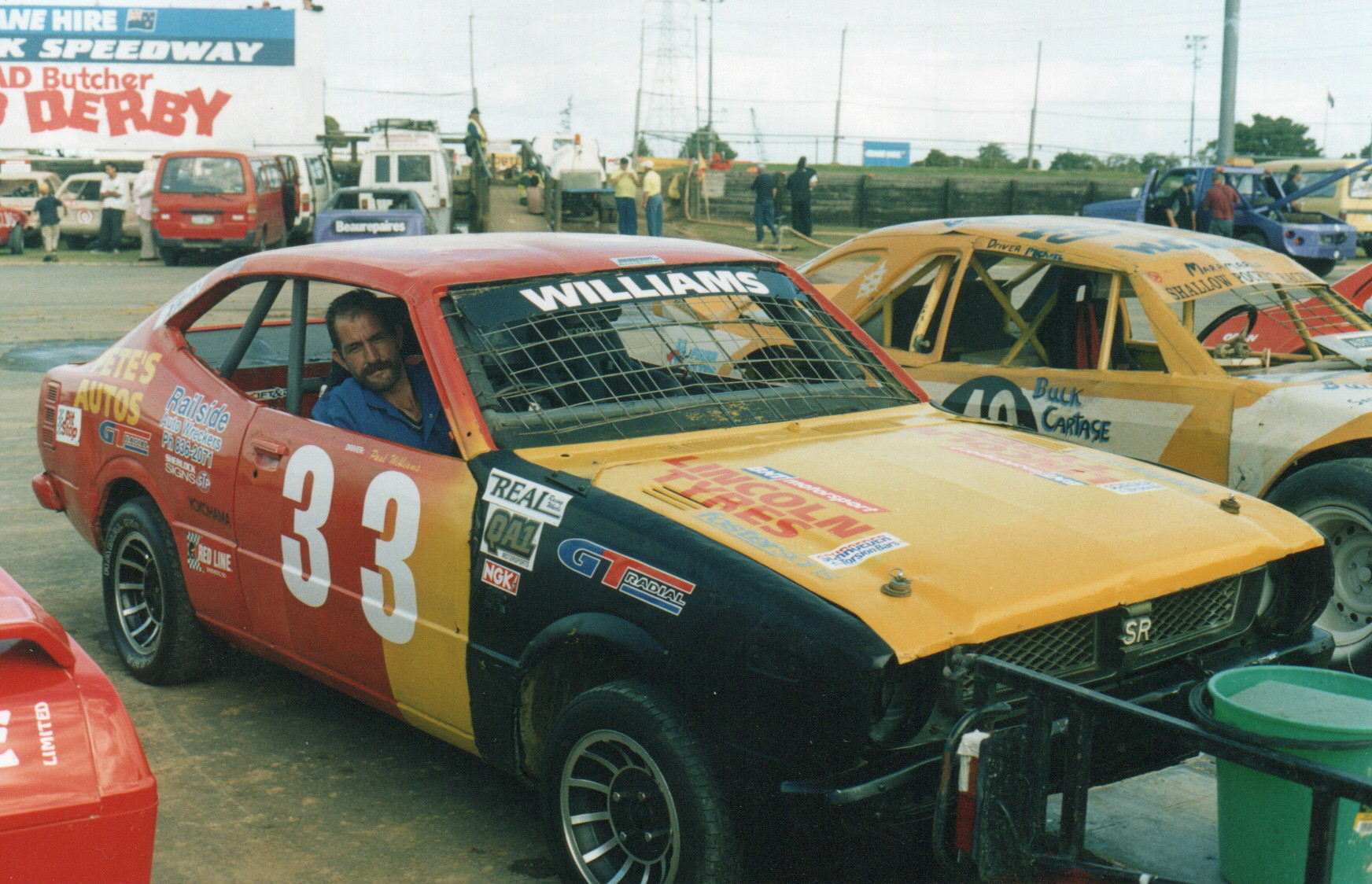

Then fit a better engine
Christchurch driver Trevor Crowe also chose the early ’70s TE21 Corolla coupé as the basis for his modified saloon racer in 1972. However, his tack from that similar platform was completely different — he shoehorned a brutal 327 Chevy V8 into it. It was destined to compete in the wild hybrid Open Saloon Car Association (OSCA) championship in the South Island. Crowe was an excellent engineer and managed to make the short-wheelbase Corolla civilised enough on the racetrack to have considerable success — probably aided a lot by his abundant driving skills.
By 1980 Trevor had refined the formula even further, installing an alloy block F85 Oldsmobile V8 in a KP60 (1978-84) rear-drive Toyota Starlet — yes, you read that correctly. This creation was a game changer in the South Island, populated with old American Trans Am Mustangs and Camaros, and Chevy-powered Capris and Victors. The Starlet Olds V8 did the business very effectively, winning Crowe a couple of OSCA titles.
Around the same time, Warren Burt — also from the South Island — built up the only modified Toyotas to compete in what was the top modified circuit racing saloon championship, between 1978 and 1984. The Shellsport championship was for factory-based saloons up to 2000cc. It was fertile ground for Datsuns, particularly those developed by Reg Cook, and also for the Mk1 Escort of Bryce Platt. After originally campaigning a modified four-door Corolla TE21 four-door sedan, Warren Burt built up a race version of the KP60 rear-drive Toyota Starlet that was light and well balanced. He had moderate success with the car in the 1980–81 season, including third place in South Island races, but as he didn’t travel to the North Island rounds, he was consigned to an eighth-equal result in the season’s final points tally.
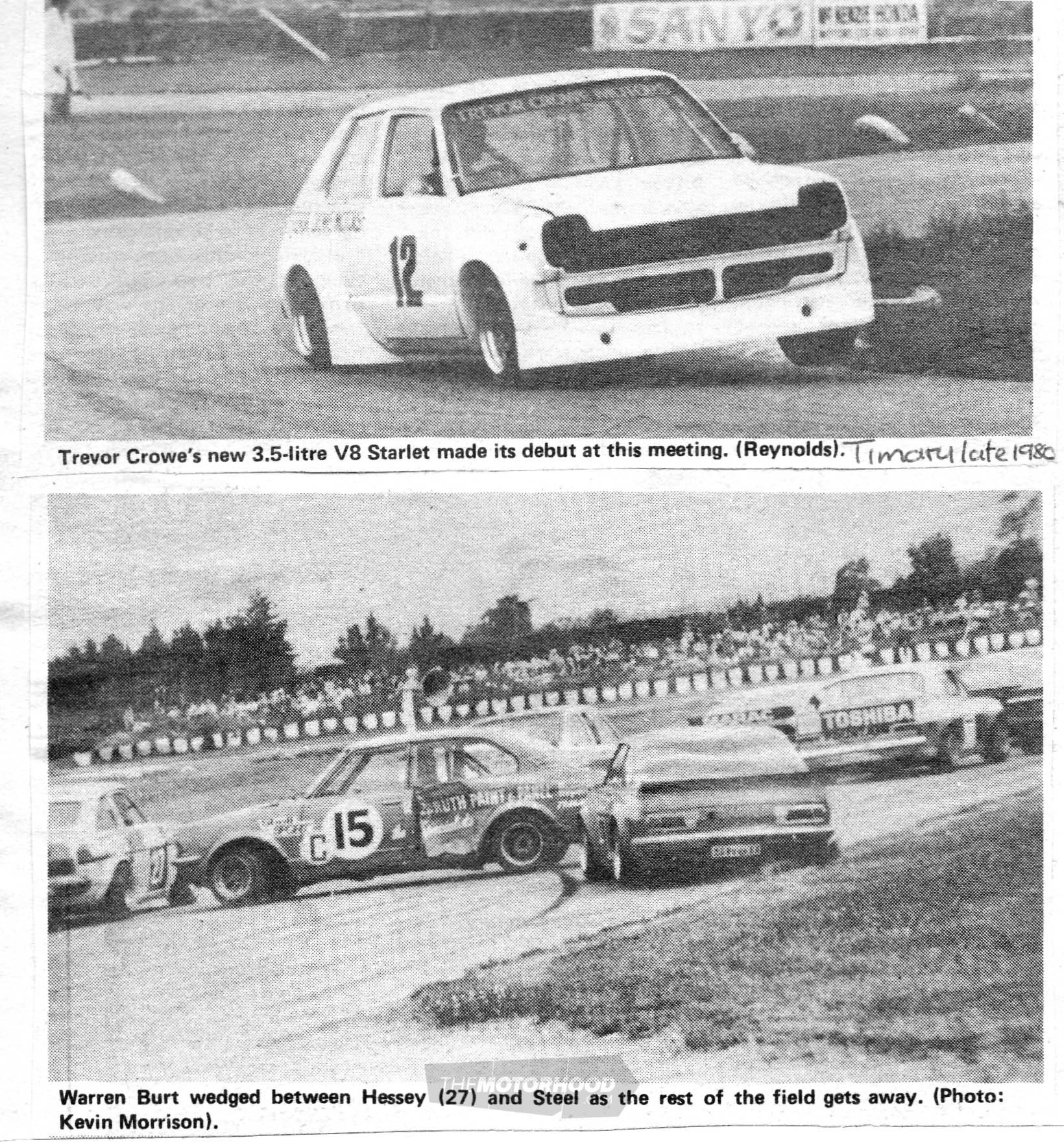
Top: Trevor Crowe debuting his 3.5 Oldsmobile V8 Toyota Starlet. Bottom: Warren Burt’s Corolla tangles with Datsuns, Timaru, October 1980
Starlets shine on dirt
Speaking of Toyota Starlets brings back memories of an amazingly effective dirt-track, speedway oval, production saloon racer. The Starlet seemed to be tailor-made for this class, and was often much better than the heavier cars. I saw Starlets go really well on a number of North Island speedways around the early 2000s. Light and nimble, the front-drive P70 Starlets
(1984-1989) in particular really put the power down well. In 2005, at Waikaraka Park Speedway, Auckland, I watched a consummately talented young driver with incredible car control deliver a supreme performance in a well set up P70 front-drive Starlet. Ranged against him were what appeared to be a formidable array of performance sedans, including Toyota Supra/Celicas, an MR2 twin cam, and others, but he buried them all in a sublime driving display, in his beautifully balanced, humble Starlet.
Other oval speedway dirt-track categories have also been recipients of Toyota racing hardware, if not complete cars. Stock cars have regularly used the Toyota V8 and Camry V6, at times to good effect. As mentioned, I’ve always been a keen follower of the production sedan class and have been fascinated to observe models from earlier eras — such as the mid-’70s Corolla coupés, Coronas, and Supras, as well as similar offerings of Escorts, Nissans, Honda CRXs, Integras, Mazda RX7s, and so on, duking it out on the dirt.

Driver and his steed a mid to late 80’s Toyota MR2 twin cam production saloon racer, Waikaraka Park Auckland 2005. Photo: Gerard Richards
Weapons of choice
The hot AE86 Corolla Sprinter GT proved to be the weapon of choice for the majority of under two-litre Kiwi circuit saloon car racers from the mid ’80s. This package was dynamite, with its lethal uprated four-valve EFI Yamaha/Toyota twin cam operating in the sleek aerodynamic FR body.
It would be remiss of me not to mention the four wins of Spanish international rally driver Carlos Sainz in the Rally of New Zealand. He won three times between 1990 and 1992, and also in 1998, all with the same co-driver, Luis Moya. Sainz used the Toyota Celica GT-4 ST165 for his trifecta in 1990–92, and the Toyota Corolla WRC for his 1998 win.
The only other Toyota winner of the Rally of New Zealand was the Björn Waldegård/Hans Thorszelius team with a Toyota Celica in 1982.
No locals have won the Rally of New Zealand in a Toyota product. The 1972 Toyota Corolla TE27 twin cams imported in the mid ’70s for the purpose did look like potential candidates but facing off against the all-conquering Escort BDAs in international hands proved to be a step too far. To my knowledge, no Toyota has won the New Zealand Rally Championship either, despite an official Toyota New Zealand Racing Team being entered for many years — correct me if I’m wrong here, please.
No mention of Toyota’s New Zealand racing heritage would be complete — not that this quick skim through makes any claim to that — without an acknowledgement of the incredible contribution of the Toyota international single-seater racing car class. Sir Colin Giltrap’s vital role in supporting this class through his Toyota dealerships and his passion for the sport is to be highly commended. To have a pure state-of-the-art single-seater racing car class is, in my view, the elite form of motorsport, and is essential for a motor racing country endeavouring to groom young racing drivers at the highest level.
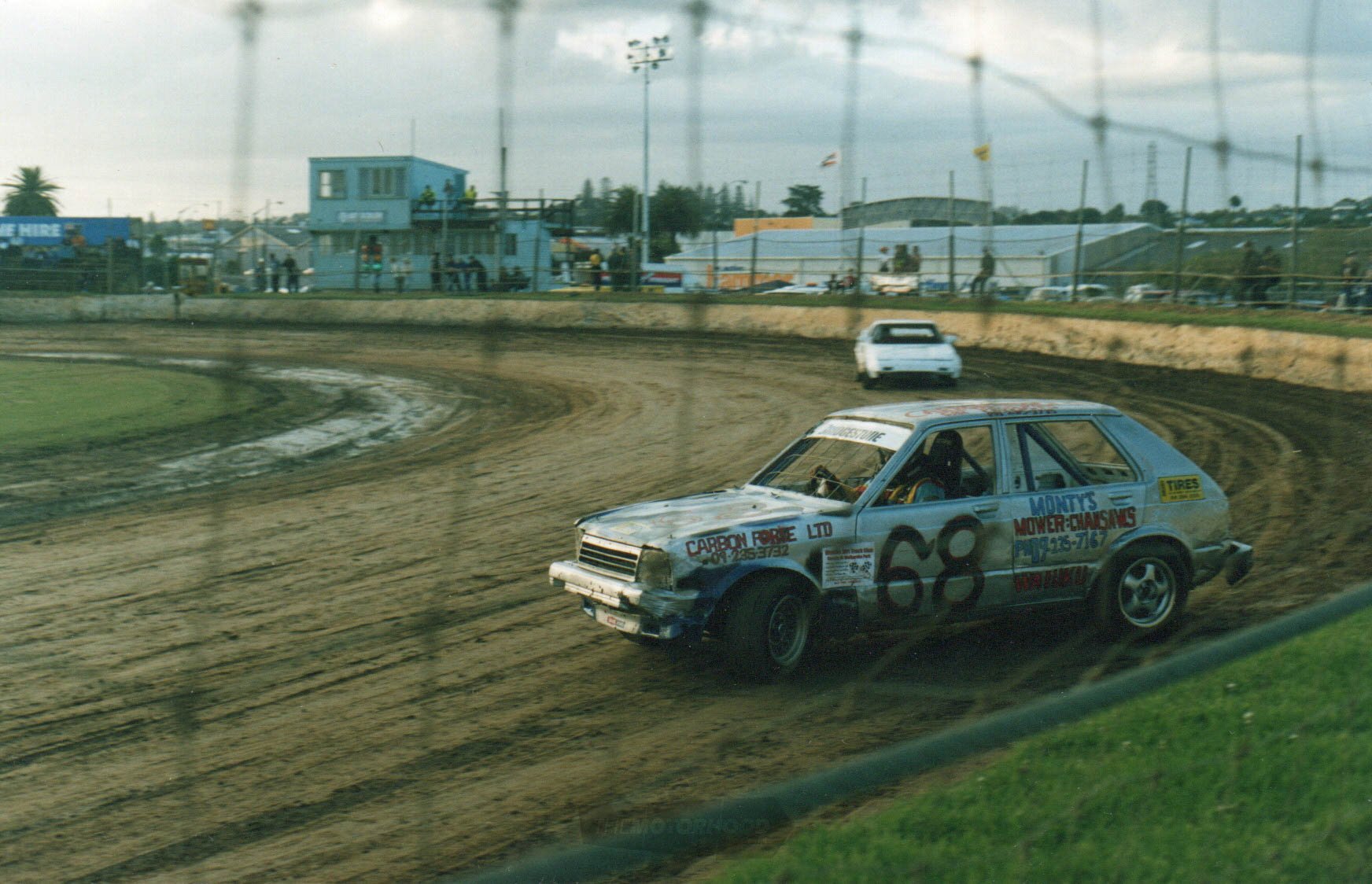
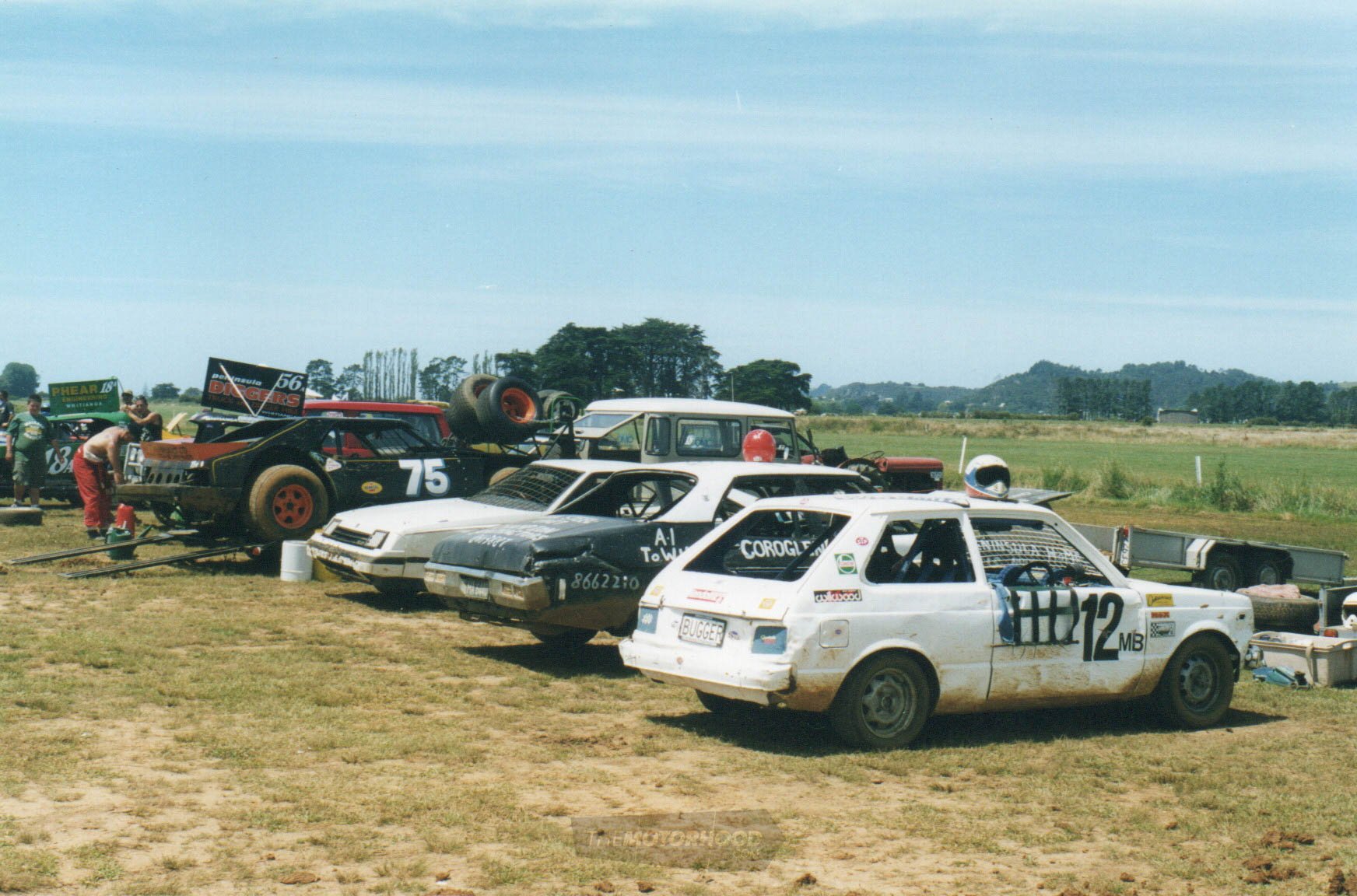
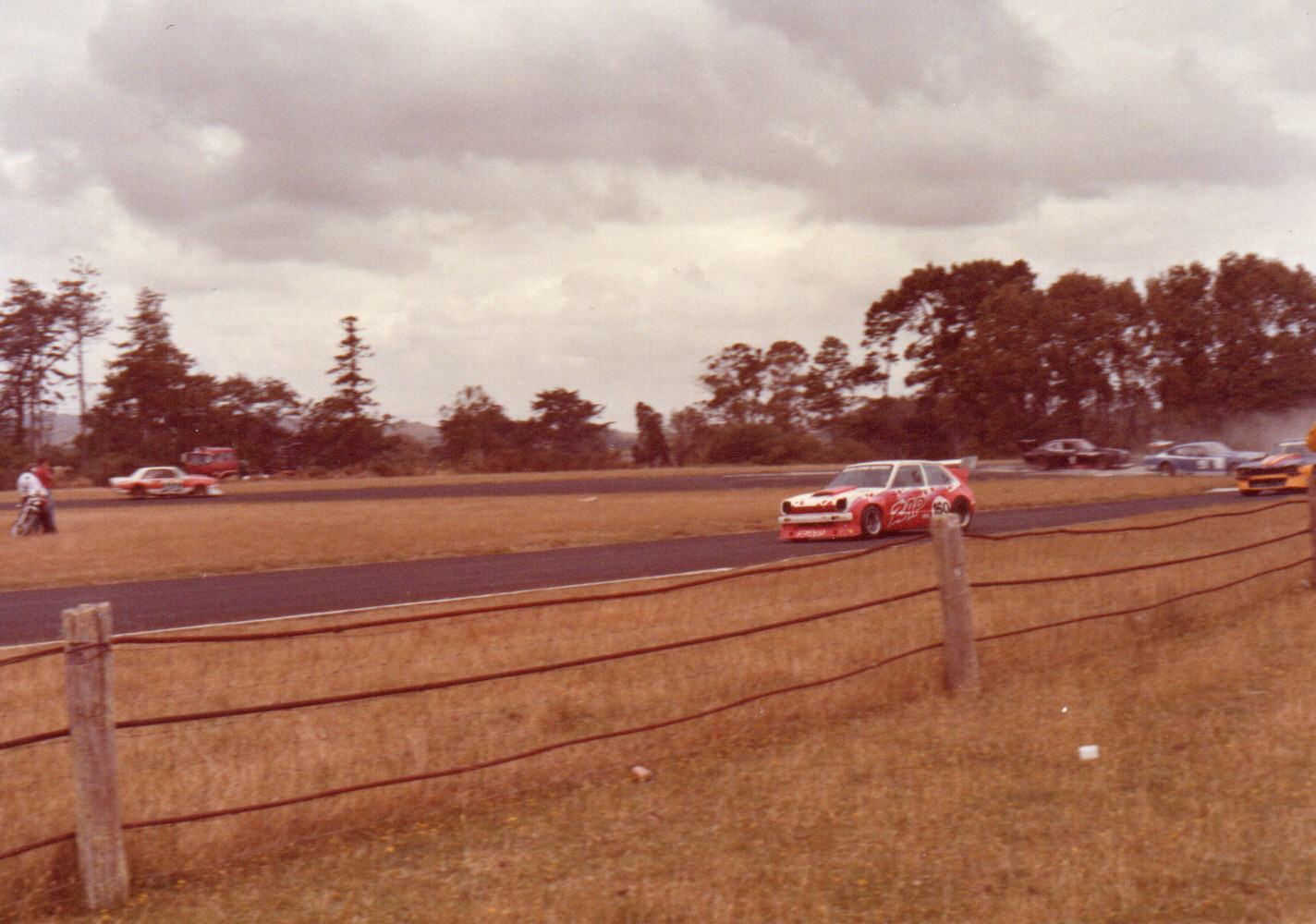

The amon factor
Returning to the Chris Amon Toyota connection, in drawing this story to a conclusion, it is hard to overestimate how much Amon contributed in radically improving the breed and the perception of the local product from 1983 to the end of local assembly in 1998 and beyond.
Before 1983, the local offerings had a somewhat stodgy appeal — the Corolla TE21 coupé being the exception. They were bulletproof mechanically, but were flabby in the handling department, matching their inspiring looks. Chris Amon changed that, particularly in improving the road manners of Corollas, Coronas, Celicas, and Camrys, turning them into some of the best-handling cars in their categories on the local market. The story goes that he was called in by Toyota New Zealand to see what could be done. His first suggestion was to fit a roll bar to the front suspension. This wasn’t available from Japan, as it didn’t fit the cost per unit (car) ceiling, so Chris drew one up and had it made in Australia. Along with other spring and shock adjustments, it transformed the Corolla, which now rode well and handled superbly — better than any other Corolla worldwide.
Apparently Japan found out these changes were being made to New Zealand-assembled Corollas and Coronas. A Toyota representative was dispatched from Japan post-haste to investigate. Two cars were taken to the Manfeild circuit, one with the Amon mods and the other without. The New Zealand-modified car’s performance was far superior and the point was made.
Next thing Chris was on a plane to Tokyo to advise Toyota’s top brass. The rest, as they say, is history. Toyota even produced a signature model in Amon’s honour in about 1985, called the Corona Amon. Toyota went from strength to strength throughout the ’80s and ’90s, with all the local product being massaged by Chris. The arrival of the twin cam on the local market from around 1988 further enhanced the brand. Chris was also involved in the preparation of the Toyota Team New Zealand Celicas and Corollas.
Which brings me back to where I started, recently parted from my ‘best ride’ classic 1998 New Zealand-assembled AEIIR Toyota Corolla 4A-FE 1587cc twin cam five-speed manual. It was among the very last of the illustrious line of home-grown Corollas, built with the magic Amon touch in October 1998 — just before local production ceased. I have no hesitation in calling it a true Kiwi classic. I enjoyed it for 14 years, and hopefully it will live on and continue to give pleasure because it really is the last of a particular legendary local breed.





This article originally appeared in NZCC issue No. 375


